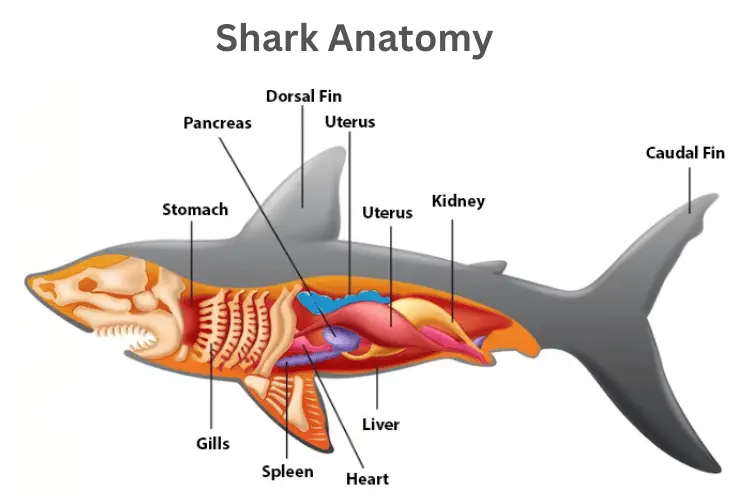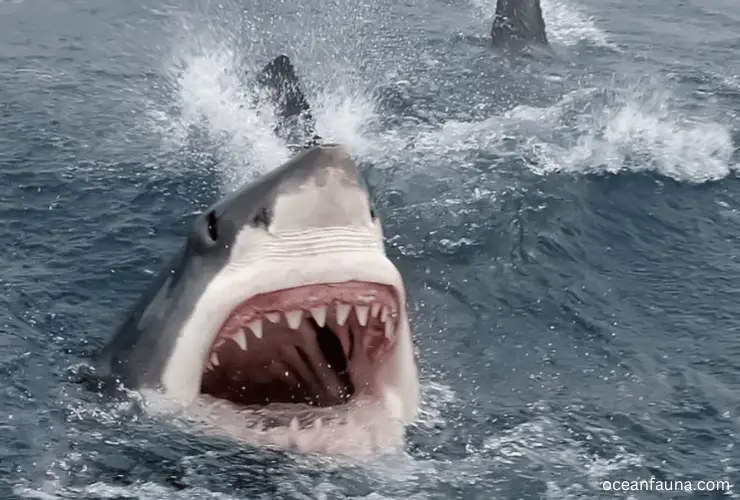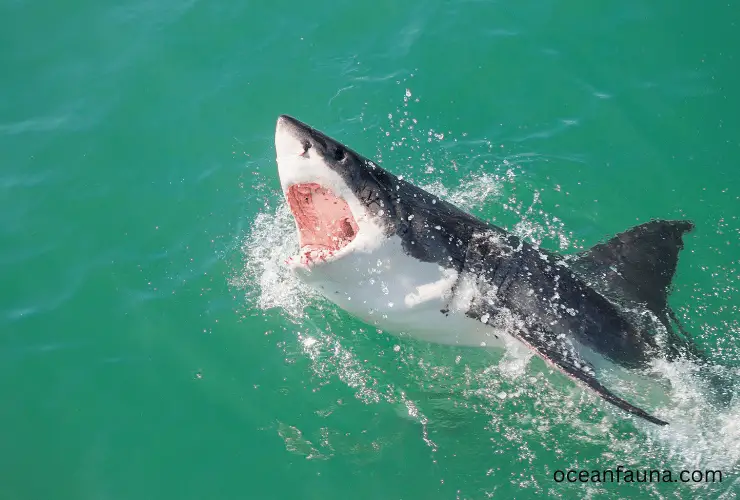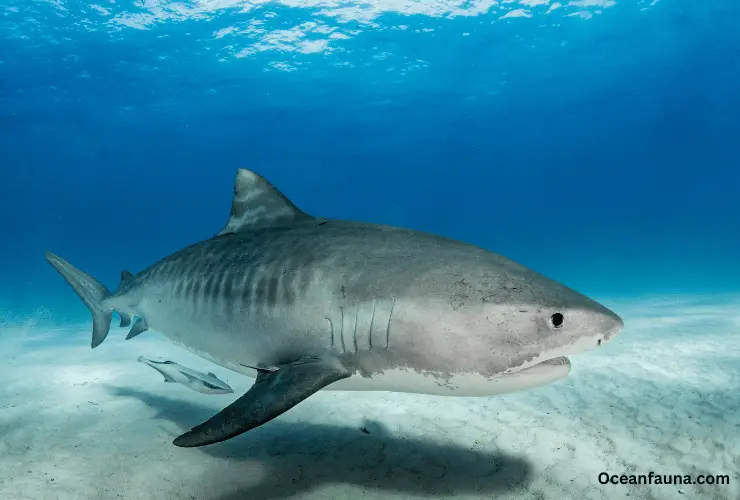Most people get confused and think that sharks and whales are both tetrapods.
Well, sharks aren’t tetrapods because they don’t have limbs like whales and other tetrapods. Most shark species have eight fins instead.
In this article, I will do a deep dive into the details to remove all the confusion, including an analysis of what class sharks actually belong in.
Are Sharks Tetrapods?
No, sharks are not tetrapods. Instead, they belong to the Chondrichthyes class, a group of fishes with cartilaginous skeletons and fins supported by rays. These fishes make up the vast majority of marine creatures and include other species, such as skates, rays, and chimaeras.
Don’t think sharks are not vertebrates. Yes, they are, but they are not tetrapods. However all tetrapods are vertebrates, but all vertebrates are not necessarily tetrapods.
On the other hand, Tetrapods are from the Osteichthyes class, which evolved from Chondrichthyes. This class includes amphibians, reptiles, birds, and mammals whose bones are made out of bone tissue instead of cartilage. As a result of this difference in skeletal structure, sharks do not possess any four-limbed appendages or limbs.
In addition to this significant difference in anatomy between sharks and tetrapods, there are several other distinctions between these two classes of animals. Sharks have gill slits rather than lungs for respiration, while tetrapods breathe air through their lungs.

Sharks possess a lateral line system, while tetrapods lack this sensory organ.
Furthermore, while most tetrapods reproduce by laying eggs with external fertilization (outside the body), most shark species use internal fertilization, where the male inserts sperm into the female’s reproductive organs for fertilization.
Because these animals differ in so many ways, both anatomically and physiologically, it is clear that sharks cannot be considered part of the same taxonomic group as tetrapods.
Reasons Why Sharks Are Not Tetrapods
Here are all the reasons why sharks are not tetrapods.
Skeleton
Sharks have a skeleton made of cartilage, which is lighter and more flexible than bone. Cartilage allows for more efficient movement in the water but is not as strong as bone. In contrast, tetrapods have a bony skeleton that provides more support and protection but is heavier and less flexible.
Respiration
Sharks extract oxygen from the water through gills, which are specialized structures that filter water over a network of capillaries. In contrast, tetrapods extract oxygen from the air through the lungs, which are specialized organs that exchange gases between the bloodstream and the atmosphere.
Limbs
Sharks do not have limbs, which are adaptations for movement on land or in water. Tetrapods, on the other hand, have four limbs adapted for various locomotion modes, such as walking, running, swimming, or climbing.
Teeth
Sharks have multiple rows of teeth that are constantly being replaced throughout their lives. This allows them to maintain a sharp, efficient set of teeth for capturing and eating prey. In contrast, tetrapods have fewer teeth that are adapted for specific functions, such as chewing or biting but are not replaced as frequently.
Fins
Sharks have specialized fins that allow for efficient movement and maneuvering in the water. These fins include the dorsal, pectoral, pelvic, and caudal fins. In contrast, tetrapods have limbs that are adapted for movement on land and in water but may also have specialized structures such as flippers or webbed feet.
Skin
The skin of sharks is usually moist and lacks scales, which reduces friction and drag in the water. This allows for more efficient movement and helps to conserve energy. In contrast, the skin of tetrapods can be dry or moist and may have scales or fur, which provides protection and insulation.
Reproduction
Some species of sharks are oviparous, laying eggs that are fertilized and then left to develop on their own. Others are ovoviviparous, keeping eggs inside the body until they hatch. In contrast, tetrapods can lay eggs (oviparous), have live births (viviparous), or retain eggs inside the body until they hatch (ovoviviparous), depending on the species and the environment.
These differences reflect the adaptations of sharks and tetrapods to different environments and ways of life.
Tetrapods vs. Chondrichthyes
Tetrapods and Chondrichthyes are two distinct groups of animals, each belonging to a different class of vertebrates.
| Feature | Tetrapods | Chondrichthyes |
| Number of limbs | 4 | 0 |
| Skeleton type | Bony | Cartilaginous |
| Respiration | Lungs | Gills |
| Habitat | Land and water | Marine |
| Special adaptations | Diverse adaptations for various environments | Specialized adaptations for marine environment |
| Fins | Absent or present in some species (e.g. whales, dolfins) | Present and specialized for swimming |
| Teeth | Various shapes and arrangements depending on species | Sharp and numerous for capturing prey |
| Egg laying | Oviparous, ovoviviparous, or viviparous | Oviparous or ovoviviparous |
| Skin type | Dry or moist, scales or fur | Usually moist, without scales or fur |
Tetrapods are vertebrates with four limbs and include amphibians, reptiles, birds, and mammals. They are characterized by a bony skeleton, lungs for breathing, and the ability to live on land and in water.
Tetrapods have diverse adaptations that allow them to survive in various environments, from the Arctic to the desert.

On the other hand, Chondrichthyes is a group of fish that includes sharks, rays, and skates. They are characterized by having a skeleton made of cartilage instead of bone and five to seven-gill slits on the sides of their head.
Chondrichthyes are also equipped with specialized adaptations that allow them to thrive in marine environments, such as sensitive electroreceptors for detecting prey and sharp teeth for capturing and consuming it.
Evolution of Tetrapods
The evolution of tetrapods, or four-legged vertebrates, is a complex and fascinating process that took place over hundreds of millions of years. Here is a general overview of the evolution of tetrapods:
Origin of Tetrapodomorpha
The earliest tetrapod-like vertebrates, known as Tetrapodomorpha, appeared during the middle Devonian period, about 390 million years ago. These early tetrapodomorphs were lobe-finned fish that had evolved adaptations for life in shallow waters, such as sturdy fins that could support their weight and enable them to crawl on land.
Transition to Land
Over time, some tetrapodomorphs developed adaptations that allowed them to transition from water to land, such as stronger fins that could support their weight, improved respiration and the development of bones in their fins that eventually became limbs. These early tetrapods were the first vertebrates to live primarily on land.
Diversification
Over the next few million years, tetrapods diversified into a wide variety of forms, including early amphibians, reptiles, dinosaurs, birds, and mammals. This diversification was driven by a number of factors, including the availability of new habitats, changes in climate, and the evolution of new adaptations that allowed tetrapods to better survive and reproduce in their environments.
Origin of Amniotes
During the Carboniferous period, about 300 million years ago, a group of reptiles known as amniotes evolved. These reptiles were the first to lay eggs with a protective outer layer that allowed the eggs to be laid on land, away from water. This major adaptation allowed reptiles to colonize new habitats and further diversify.
Origin of Birds
Theropod dinosaurs were reptiles that changed into birds about 150 million years ago. Birds are different from other tetrapods because they have feathers, can fly, and have skeletons that are lighter and more efficient.

Origin of Mammals
A group of reptiles called synapsids changed into mammals about 200 million years ago. Mammals are different from other tetrapods in many ways. They have hair, mammary glands that make milk, and the ability to control their body temperature.
This is a broad overview of the evolution of tetrapods, and there is still much that is not known about the exact process of this evolution. However, by studying the fossil record and using genetic and comparative anatomy techniques, scientists are continually learning more about how tetrapods evolved and diversified over time.
Evolution of Sharks
Most scientists believe that sharks originated around 400 million years ago, descended from a small leaf-shaped fish with no eyes, fins, or bones. The evolution of sharks can be divided into the following stages:
Early Ancestors
The early ancestors of sharks were small, bottom-dwelling fish with primitive features, such as a cartilaginous skeleton, multiple rows of teeth, and a streamlined body shape.
Cladoselache
During the Devonian period, about 385 million years ago, a group of these early shark-like fish evolved into the genus Cladoselache. These fish were characterized by a more streamlined body shape and improved swimming abilities, which allowed them to hunt more efficiently.
Diversification
Over the next few million years, sharks continued to evolve and diversify, becoming larger and more specialized in their habitats and feeding behaviors. During the Mesozoic era, about 250 million years ago, many new species of sharks evolved, including some of the largest sharks that have ever lived.
Modern Sharks
About 65 million years ago, during the Cenozoic era, sharks began to change into what we know today. Some of the things that make these sharks different from their ancient ancestors are their improved senses, such as better vision and the ability to sense electrical fields, and their more specialized teeth and jaws for hunting and eating.
Diversity and Distribution
Today, there are over 400 species of sharks. Each adapted to a specific habitat and way of life. Sharks can be found in oceans worldwide, from the deep sea to tropical and temperate waters.
Recent Changes
Recently, human activities have had a major impact on shark populations, including overfishing, habitat destruction, and accidental bycatch. As a result, many shark species are now considered threatened or endangered, and conservation efforts are underway to protect these critical predators and the ecosystems they play a role in.

FAQs
Are there any fish tetrapods?
No, fish are not considered to be tetrapods. Tetrapods are typically defined as four-limbed animals that have evolved from early tetrapodomorphs, a group of lobe-finned fishes that lived during the Middle Devonian period.
While early tetrapodomorphs like Eusthenopteron and Panderichthys may appear fish-like in ecology and anatomy, they are considered the earliest known representatives of the tetrapod lineage.
Later forms, such as Acanthostega and Ichthyostega, display more obvious characteristics of the modern tetrapod form, including limbs with digits.
Moreover, modern fish have retained many original features with little change over time, such as gills and fins, compared to the drastic changes in later tetrapods.
As a result, while some aspects between early tetrapodomorphs and fish may overlap, these organisms cannot be classified as either one or the other. Rather they are considered to have been key evolutionary intermediaries between the two groups.
Do sharks have four limbs?
No, sharks do not have four limbs. Sharks are classified as cartilaginous fish, meaning their skeleton is made of cartilage instead of bone. This means that they do not have any limbs at all. Instead, sharks rely on a set of eight fins that help them move through the water quickly and efficiently.
These fins include a pair of pectoral fins located near their head, which they use to push themselves through the water and stay stable in strong currents; a pair of pelvic fins located near their belly, which they use for more precise maneuvering when needed; two dorsal fins located on their back, which help keep them upright; an anal fin located near their tail; and a caudal fin located at the end of their body, which acts as a rudder and helps them propel forward.
While these fins provide some mobility and guidance while swimming, they do not replace traditional arms or legs found in other animals.
Conclusion
Now you know every difference between tetrapods and sharks. Unequivocally, sharks are not tetrapods but rather chondrichthyes. The main differentiator factor is the absence of limbs in sharks, whereas tetrapods itself means “Four limbs.”


1 thought on “Are Sharks Tetrapods? [Answered]”